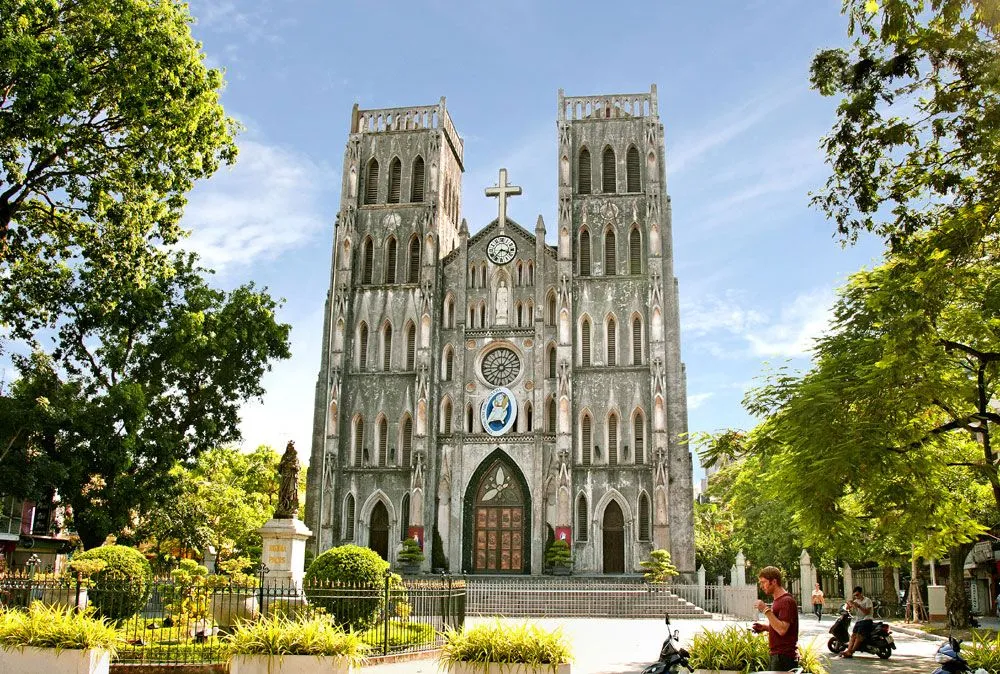Welcome to the Presidential Palace in Hanoi! Located in the heart of the city, this iconic building has served as a symbol of power and prestige for centuries. From its impressive architecture to its opulent interior, the Presidential Palace is sure to be a highlight of your visit to Hanoi.
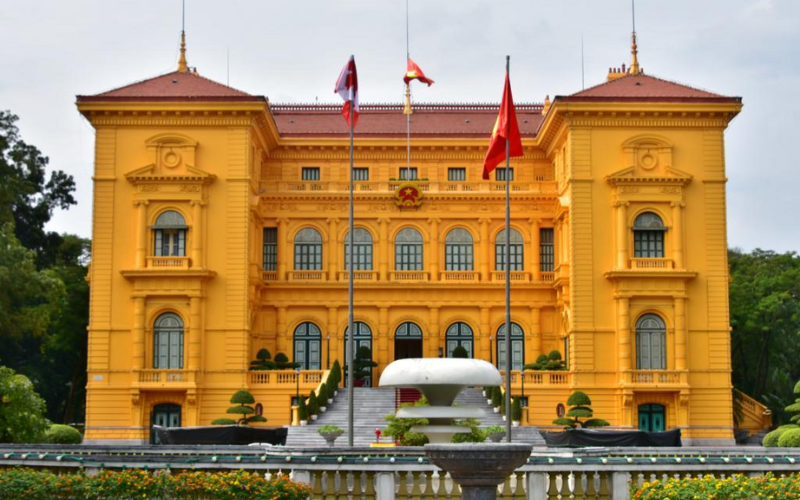
Step inside and explore the storied history of Vietnam’s most important landmark and experience the grandeur of its past. Take a moment to see what you’ll discover in this popular spot. Explore with vietnamtraverlers.com right now!
Contents
Presidential Palace‘s History
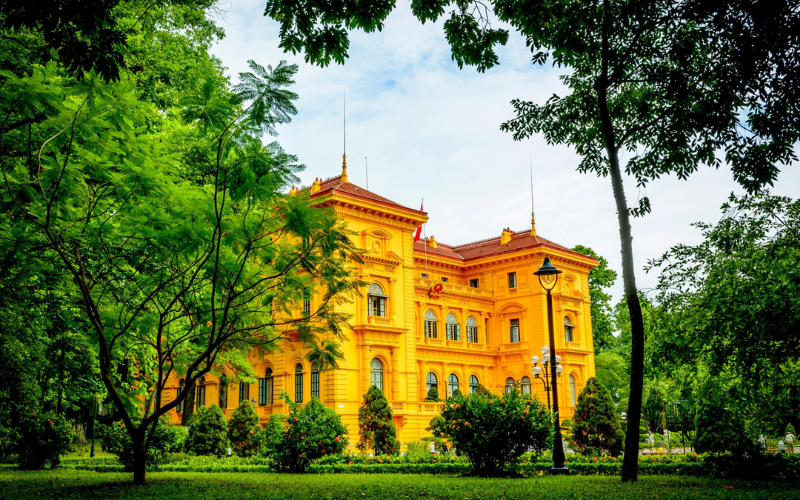
Between 1900 and 1906, the palace was built by Auguste Henri Vildieu. He is a French architect who worked for the French colonial empire in Indochina. This grand building was made for the French governor general and his family to live in while they were in Indochina. Despite its apparent French heritage, the French colonial mansion shows significant European influence.
It is said that when Vietnam gained independence in 1954, Uncle Ho refused to stay in the grand building for symbolic reasons. However, he used this house to host national guests there.
Overview about Presidential Palace
|
Location |
No. 2, Hung Vuong Street, Ngoc Ha Ward, Ba Dinh District, Hanoi, Vietnam |
|
|
Reminder: every day of the week with the exception of Sunday and Thursday afternoons |
||
|
Opening hours |
April – October |
7:30 – 11 am |
|
1:30 – 4 pm |
||
|
November – March |
8 – 11 am |
|
|
1:30 – 4 pm |
||
|
Fee for entry |
Vietnamese visitors | Free |
| Foreign visitors |
40,000 VND/ticket |
|
Unique Characteristic of the Presidential Palace
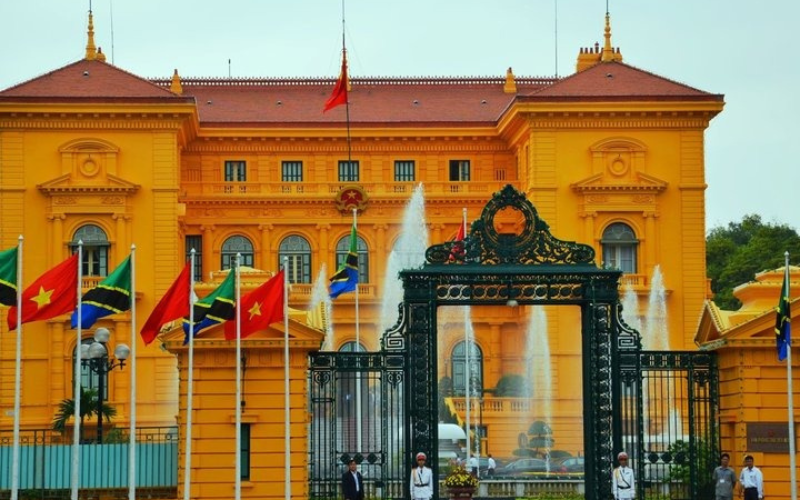
The Presidential Palace is on a three-story cliff that looks out over Hung Vuong Street in the center of Hanoi. Its impressive size is around 1,300 square meters. This impressive architectural piece, inspired by the Beaux-Arts style of the 18th century, is characterized by its vibrant yellow hue and strong iron gate. It is further complemented by a grand staircase and 30 majestic rooms, each with its own unique decoration.. It all makes for a truly impressive sight!
Beaux Arts architecture style is a theatrical and heavily ornamented classical style taught during the 19th century
Source: https://www.aoc.gov/
This Presidential Palace has 3 floor including:
- 1st floor: The rooms for serving food and drinks
- 2nd floor: Visitors will find a spacious reception area as well as an expansive banquet hall and gracious guest rooms.
- 3rd floor: Visitors can find a serene oasis that was once home to the Governor-General of French Indochina before 1954.
What to see at Palace House?
House No.54
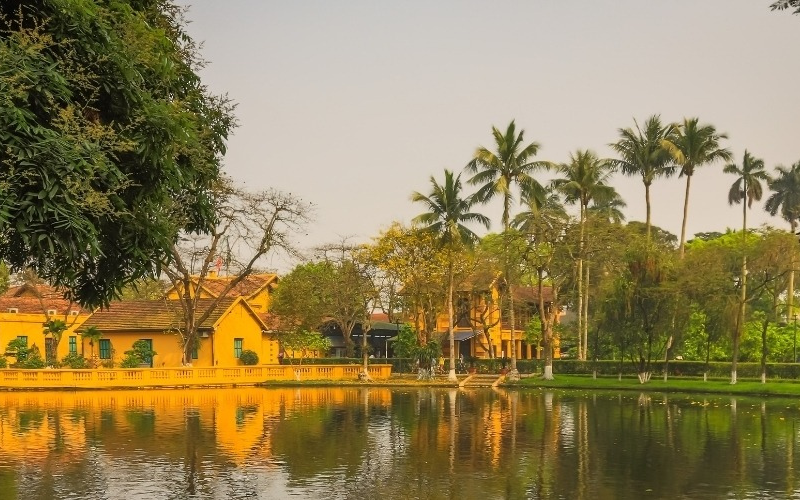
During this period, President Ho resided here, where he maintained his office as well before relocating into the house on stilts.
The house has three separate and unique rooms: an office, a living room, and a lounge area. Each space has its own distinctive ambience.
The President’s quarters were situated close to the pond. This particular suite provided ample sleeping accommodations for him during his stay.
People who come to the room are able to view the extensive collection of furniture, documents, and keepsakes,… These belongings have been preserved in their original state until today.
Green garden
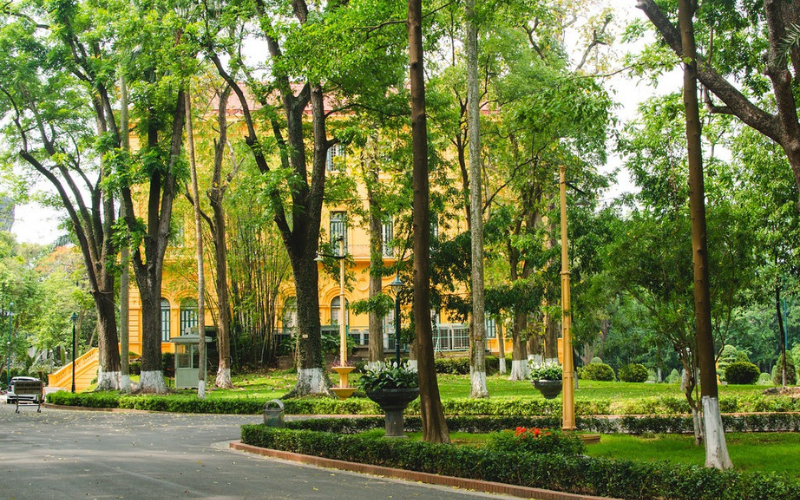
This 65,000-square-foot green garden with a tranquil fish pond is a haven for relaxation. The verdant garden is an oasis of calm amidst the bustle. It is the perfect place for travelers to be guaranteed a peaceful respite while exploring its idyllic surroundings.
Mango Street
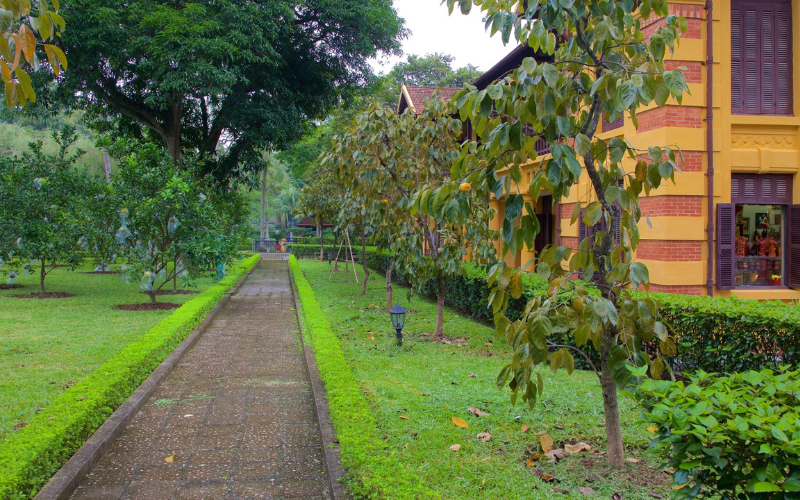
This street is a picturesque route with two rows of beautiful and mature mango trees, meandering around the complex. Five meters wide and two hundred meters long, this street has been a place of solace and fond memories for the people of the South. Uncle Ho used to often exercise here in the morning and stroll after work.
People in the south, both soldiers and civilians, have many lovely and heartfelt memories of Uncle Ho’s time on the mango street.
Uncle Ho’s Stilt House
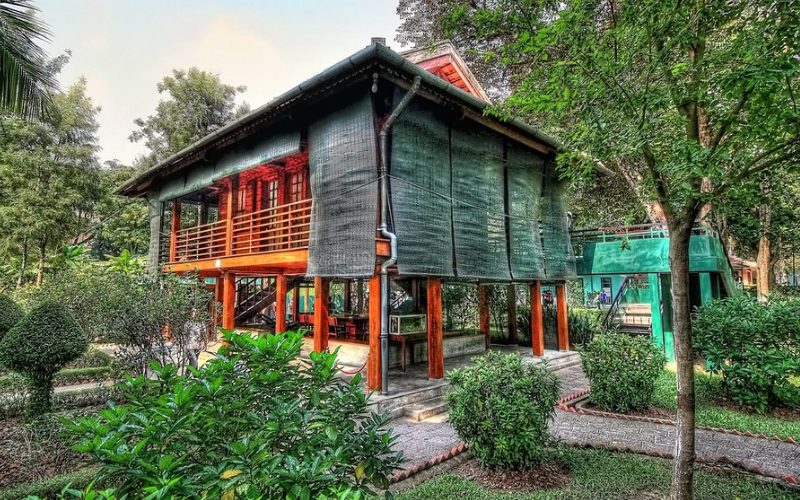
Ho Chi Minh resided in his modest stilt house during his administration of Vietnam. The Presidential Palace Historical Site lies behind the magnificent monument. This commemorates this historic figure and serves as a reminder of the sacrifices he made for all Vietnamese.
From the Presidential Palace, guests have to make a 300-foot journey through Mango Street to reach Ho Chi Minh’s humble stilt house. This modest wooden house is adorned with a profusion of tropical flora. They include fruit trees, hibiscuses, willows, frangipani, and flame trees. It provides a tranquil haven in the bustling cityscape of Hanoi.
Carp pond on the grounds of the palace
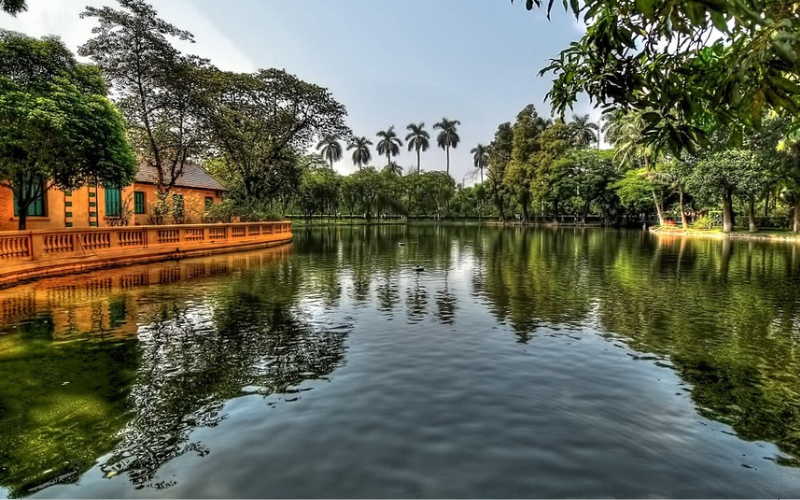
The expansive carp pond in front of the relic’s stilted home sprawls across over three thousand square meters. Filled with diverse species like carp, tilapia, and sesame, it is a veritable paradise for aquatic life. Uncle Ho went to the pond in the late afternoon to throw food to the fish. Uncle Ho would clap his hands to beckon the fish over before he fed them. The fish began to recognize the applause and respond to it.
House No.67
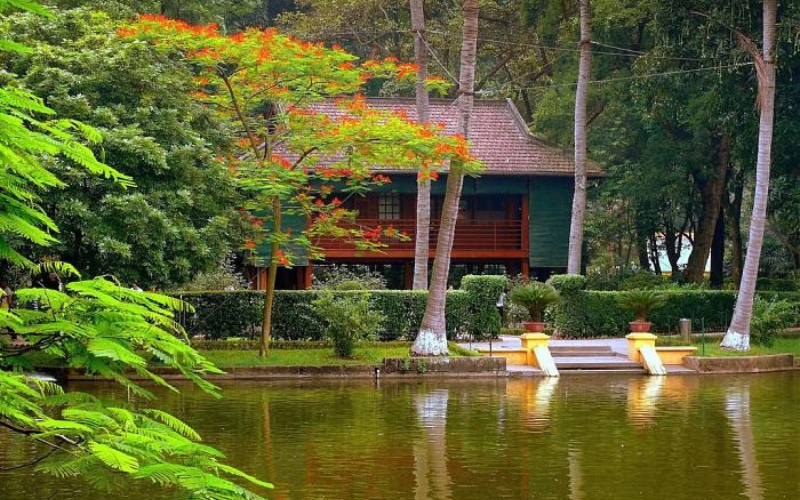
This house, painted a pale blue, is located behind the wooden house on stilts. The house towers over the other structures in the complex. From 1967 until 1969, the president worked here. Because of his grave illness, he passed away here. The mansion was constructed in May 1967 to house the president and avoid US bombing. House walls are nearly 60 inches thick, thanks to the use of reinforced concrete.
This location served as the site of many meetings with state officials. In the war in the south and the Paris Peace Accords, the President, the Polit Bureau, and state officials all gathered at the house for a discussion.
There are two military atlases, a ZENITH radio, a little clock on a closet near the bed. The other one is a daily-date wall calendar that stopped and displayed the President’s death.
How to get to Presidential Palace?
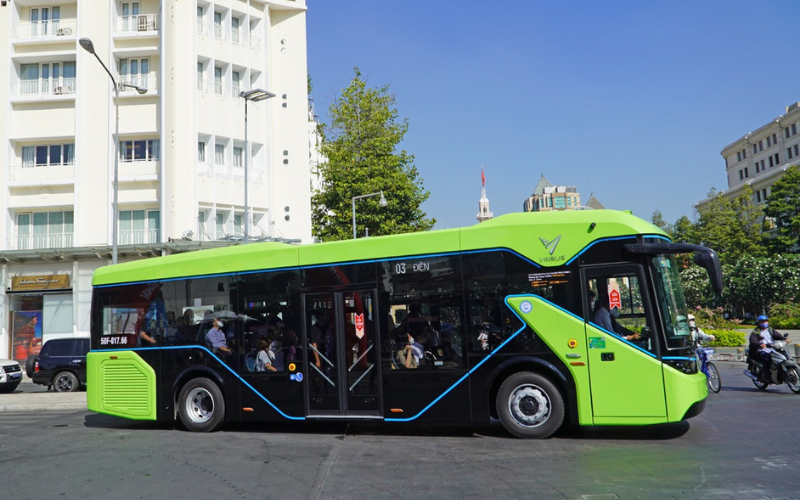
The Presidential Palace, situated only a short jaunt from Hanoi’s Old Quarter, is accessible by taxi or motorbike. You can also take bus routes 09, 22, and 45, which all pass nearby.
The opulent Presidential Palace, situated in the Ba Dinh District of Hanoi, is a mere fifteen-minute jaunt from the Hanoi Old Quarter.
Those traveling to the Presidential Palace should also take advantage of numerous other notable places nearby, such as One Pillar Pagoda, Ba Dinh Square, Hanoi Flag Tower, Vietnam Military History Museum, West Lake, Tran Quoc Pagoda, Quan Thanh Temple, or Temple of Literature, Hoan Kiem Lake,…
Conclusion
The Presidential Palace in Hanoi is one of the city’s most interesting places to visit. It shows visitors some of Vietnam’s rich history and culture. This beautiful palace is a must-see for any traveler, from its grand architecture to its beautiful gardens and courtyards. Presidential Palace in Hanoi is a great place to go if you want to learn something new about culture or just take in the beauty of the city.

